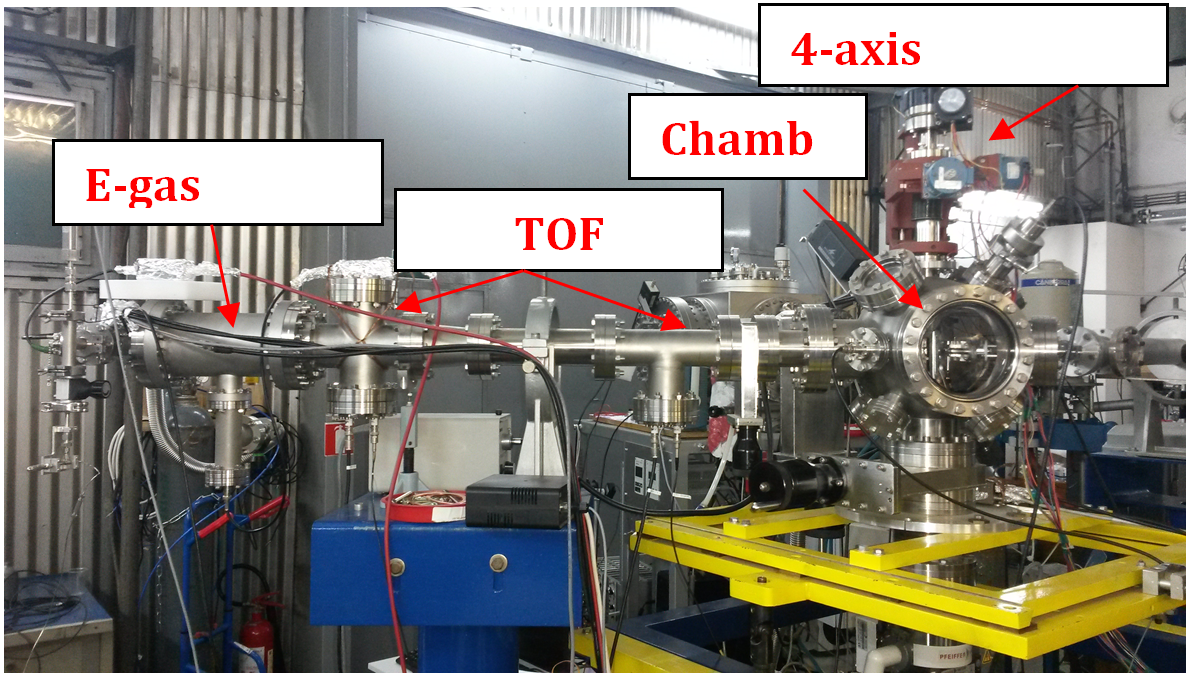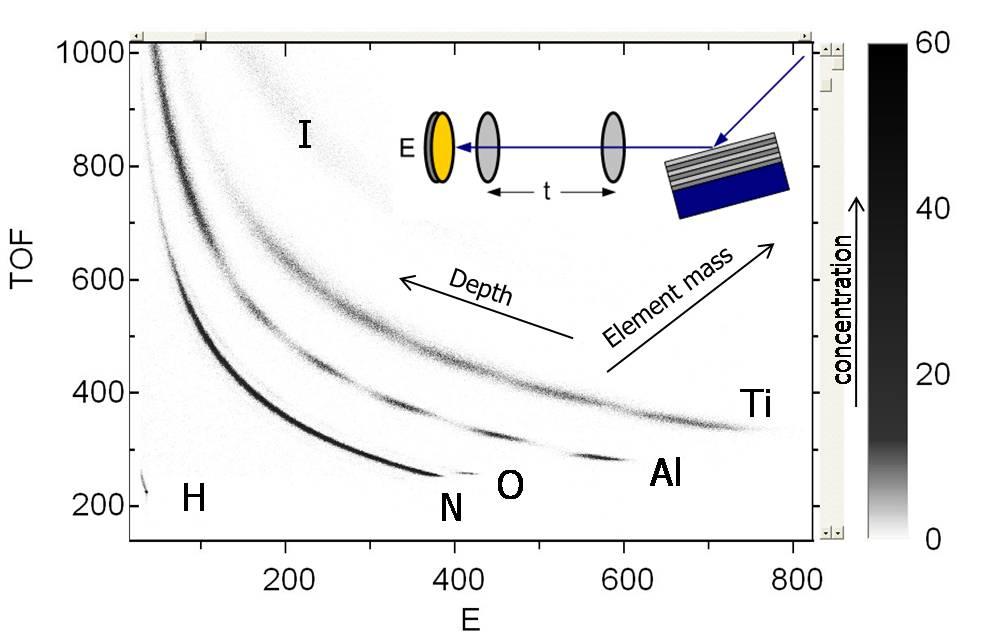TOF-ERDA
Time-of-flight Elastic Recoil Detection Analysis (TOF-ERDA) is a spectroscopic technique for the measurement of elemental concentrations and their depth profiles in unknown samples up to the 400 nm depths.
The beam of heavy ions (such as Cl, I, Au..) with energies of 0.5 MeV/A are used to recoil atomic nuclei from the target surface layers in forward directions. Energy and time of flight of the recoiled nuclei are measured in coincidence, enabling separation of all elements by energy and mass. Time/energy spectra are converted to depth profiles using known relationship of energy loss by unit of length of the ions in the sample (stopping power).
In comparison to the conventional ERDA with a stopping foil, which is used mostly for hydrogen analysis, in TOF-ERDA all elements are separated and analysed in a single measurement (including hydrogen isotopes). Because of the high stopping power of heavy ions, depth resolution down to the nm range at the surface can be achieved for C, N and O. Mass resolution of the TOF-ERDA system is 1 amu up to mass of 50 amu. Samples are exposed to the beam under the grazing angle and therefore only those with flat surface can be reliably analysed. Sample size is limited to 10×10 mm2.
Up to 5 samples can be simultaneously installed through the load lock system into the analysis chamber. Single element spectra are extracted from the 2D multielemental spectrum, while elemental depth profiles are evaluated using the CORTEO software.



